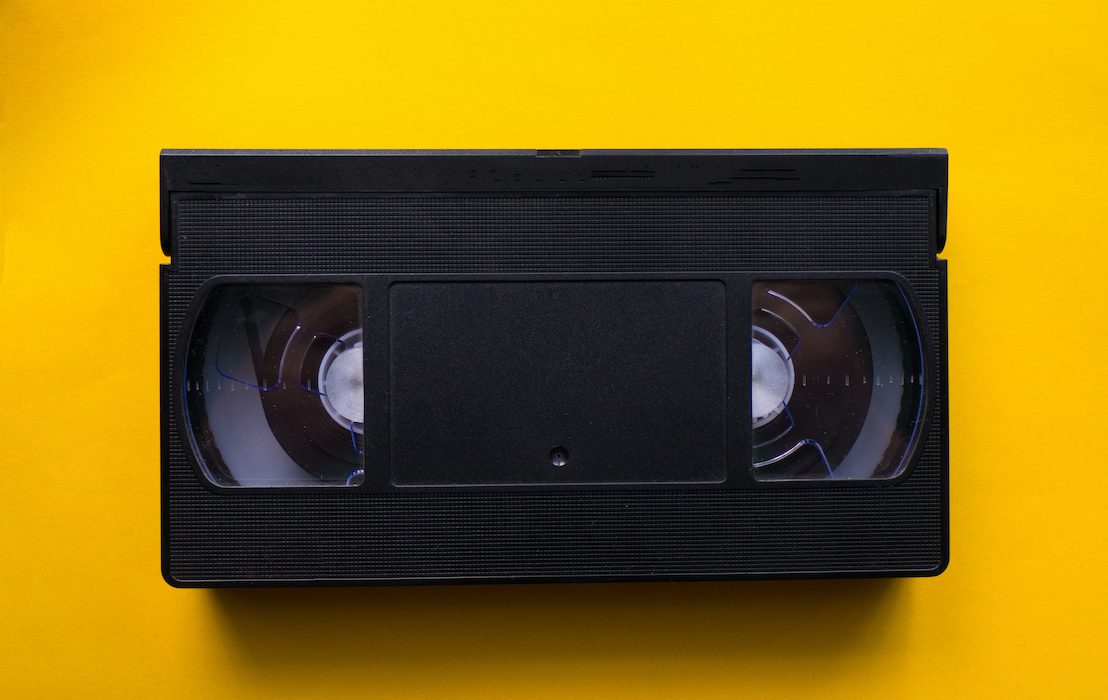The VHS Solution

My soberly considered position is that no sensible parent would allow his or her child to watch what we still quaintly refer to as television, much less use the internet, before the age of 18, if not 21.
Before proceeding, I should be clear about definitions. While I have a great deal of sympathy with various educational experiments that eliminate “screen time” for children altogether, I also consider them impractical for most families, mine included. Never mind the vexed question of how to tell your third favorite aunt that she is a monster for putting on A Charlie Brown Christmas for her great-nieces and nephews—how are you, an adult whose own relationship with (say) Skip and Shannon Undisputed is not exactly on the healthy side, supposed to enjoy your own well-considered vices without ever allowing Junior to have so much as a glimpse of a current Disney property? The answer is blowing in the wind.
For me “no television” really means something more like “no streaming or cable, no algorithmically generated playlists, and absolutely no programs or features made in the last ten or so years, with generous but very rare exceptions made for parents and grandparents and other relations, whose indulgence is their own august prerogative.” No internet, on the other hand, is much more straightforward. I mean, in the strictest possible sense, no internet, as in not making use of any personal computers, desktop or laptop, Windows, Macintosh, or Linux-based, no tablet, iPad, iPhone, smartphone, flip phone, Palm Pilot, or Gameboy linked to the well-known “global system of interconnected computer networks that uses the Internet protocol suite to communicate between networks and devices.” This unqualified opposition is a straightforward question of their mental, spiritual, and I daresay physical health.
In the case of television, it is worth pointing out that my hostility is only tangentially related to the ongoing Disney meta-discourse. In fact, it would probably be more accurate if I said that I arrived at my views long ago, and that I continue to hold them not because or in spite of but without even considering the purported ideological subtext of Super Truck and Santiago of the Seas. The hard truth is that my principal objection to virtually all children’s entertainment made in the last decade or so (which is to say within the lifetime of my own children) is that it is ugly.
This is not a negligible consideration. Children’s aesthetic sensibilities ought to be formed with just as much care and deliberation as their consciences. In fact, I am inclined to think that cultivating a healthy snobbery is as good a defense against the rot of mass digital culture as sound catechesis—indeed, perhaps a better one. Plenty of well-formed Christians expose themselves to various depraved forms of entertainment in full knowledge that these things are degrading. No one whose sense of taste is offended at age five by CGI will grow up to watch The Avengers. Put another way, the cartoons currently on Nickelodeon and PBS Kids could be produced in-house by the Institute of Christ the King Sovereign Priest and executive-produced by Rick Santorum, Mike Ditka, and Pope Emeritus Benedict XVI, and I would still not allow my children to watch them.
It strikes me as churlish somehow to end what I now realize is a kind of ersatz advice column without offering any actual advice. So I will share with readers of this website a secret I had long meant to share only with my most intimate and learned friends (and with paid subscribers to my non-existent Subtack): the VHS solution.
The best way to allow your children to enjoy some form of video entertainment over which you exercise complete control is to purchase one of those old TV/VCR combos. Acquiring the unit itself may not be easy. Several years ago one of these ancient beige boxes could be had for a song. (We have three extras sitting in our basement, all picked up on the side of the road at one point or another.) These days, for reasons I do not entirely understand, but which I fancy have to do with the invisible spread of the VHS solution, they are much harder to find and sometimes fetch $100 or more on eBay.
The good news is that once you have the unit, the tapes themselves can be purchased at any thrift shop for a trifling amount. Most Goodwill stores sell video cassettes for 50 cents apiece. This is something like a five-fold increase from 2015, but it is still vastly cheaper than Disney Plus and its numerous competitors.
Why VHS, you ask, instead of DVD? The first reason is simply that DVDs are vastly more expensive. But a vastly more important one is that magnetic tape, while not exactly indestructible, is far less likely to suffer at the hands of toddlers while hidden beneath its hard black plastic shell than any disc. (It was the same logic, I suspect, that once motivated Nintendo to manufacture its games in cartridge form.) This is to say nothing of the fact that VHS is the only legal way to show your kids the definitive versions of many children’s classics—the original Star Wars trilogy, for example, or the vastly superior Fox dub of My Neighbor Totoro.
The VHS solution will keep your children reasonably sedate while you mow the lawn or answer a message on the device you prevent them from touching. It will also give them something interesting to show their friends. More than that, learning to rewind is one of those lessons in unavoidable tedium whose learning is among the prerequisites for adulthood. In the meantime, your children will not suffer from being unable to experience Super Why in 4K.